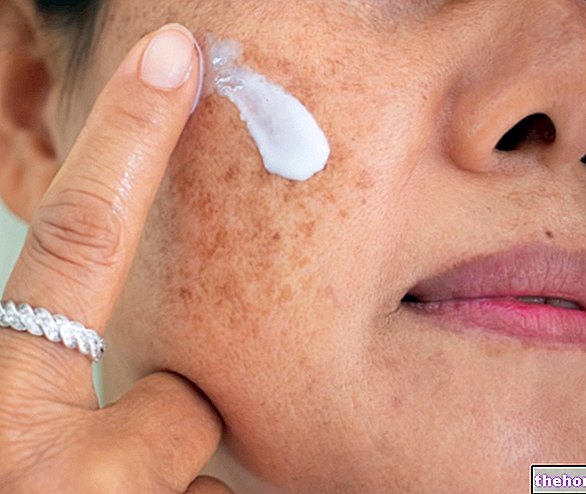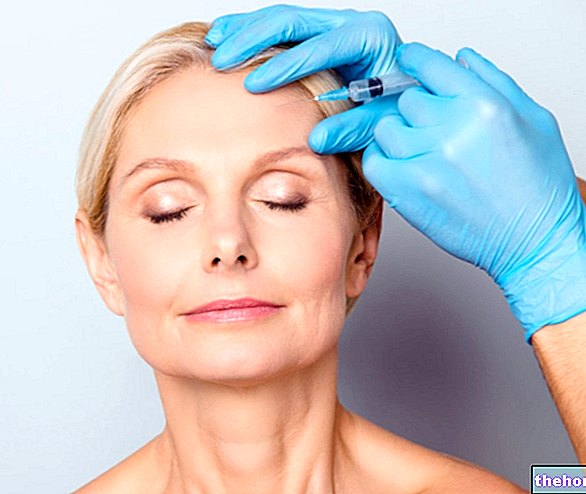What is the Harlequin Ichthyosis
"Harlequin ichthyosis - also known as" diffuse fetal keratosis "or" Harlequin fetus "- is a very rare genodermatosis, which transforms the body of those affected into grotesque and monstrous forms. Unfortunately, for this very reason, ichthyosis Arlecchino "attracts" a large number of people, more and more intrigued by the pathological findings of the disease.

Incidence
Harlequin ichthyosis is such a rare pathology that it is not always included in the list of ichthyosis: statistics show that this congenital ichthyotic form affects one in every million newborns. However, given the lack of certain epidemiological data, it is estimated that the pathology could hypothetically manifest itself in one person in 500,000.
Unfortunately, Harlequin ichthyosis has such serious consequences for the organism that it causes, in most cases, the death of the newborn within a few days of birth.
Causes
Harlequin ichthyosis is a genetic disease transmitted in an autosomal recessive manner: the symptoms manifest themselves from birth, therefore the pathology cannot manifest itself in the course of life.
It has recently been discovered that the disease is caused by an alteration in the ABCA12 gene, located on the long arm of chromosome 2. The ABCA 12 gene is also implicated in lamellar ichthyosis, which however manifests itself in a much milder form than to Harlequin ichthyosis.
Researchers at Hokkaido University, Japan, have identified that mutations at the level of the ABCA12 gene are related to a shortening or loss (deletion) of part of the encoded protein: to better understand, the researchers, analyzing the gene involved in the ichthyotic manifestation, they realized that the mutated protein of the same gene had been noticed in many cases of Harlequin ichthyosis, and for this reason they came to the conclusion that the ABCA12 gene is the triggering cause. To obtain greater confirmation, the scientists have analyzed the ABCA12 gene in healthy subjects, to verify if, indeed, that gene assumed an important role in the keratinization of the skin. Their hypothesis was demonstrated, consequently it is established that the mutation of the ABCA12 gene is responsible for Harlequin ichthyosis.
Diagnosis
The discovery of the type and location of the genetic mutation responsible for Harlequin ichthyosis has allowed research to take a great step forward in the preventive diagnosis of this very serious skin disease.
In fact, the advantages deriving from the "identification of the" guilty "gene have made it possible to diagnose the disease before birth: the diagnosis must be made on the DNA of the fetus, generally in the second trimester of gestation. It is not a test that is carried out in all pregnant women, but families at risk of Harlequin ichthyosis should be tested.
If until a few years ago the investigation was carried out through fetoscopy (invasive examination that involved the biopsy of the skin of the fetus in an advanced stage of pregnancy), currently, the DNA analysis of the cells of the fetus has proved to be a better technique for diagnosing preventive Harlequin ichthyosis, not only because it is not invasive, but also because of its more precise and timely outcome (since it can be done within the tenth week of gestation).
Signs and Symptoms
Children with Harlequin ichthyosis have thick skin that makes all movements difficult. Immediately after birth, the thickened skin "dries", giving rise to the formation of the typical squamous square-shaped plaques on the surface of the newborn (hence the name of "Arlecchino").
This skin, so thickened and covered with dry scales, loses its natural elasticity and forms a sort of so rigid armor on the body that - in addition to preventing all movements of the unborn child - it seriously disfigures its shapes and features. The disease, in fact, affects the entire surface of the body, which means that even the most unthinkable areas are affected and are transformed into bizarre and unnatural shapes: the eyelids and lips are turned outwards (from a medical point of view, the protrusions of the eyelids and lips are called, respectively, ectropion and eclabion), as well as the skin of the ears.
The cause of the eversion of the skin is due to its excessive thickening and the resulting stiffness.
Since the dehydrated and rigid rhomboid plates prevent proper breathing, the death of the baby, after a few days from birth, is very likely. Furthermore, the skin is more exposed to bacterial infections, favored by skin cracks.Still, the baby, failing to feed properly, could die from poor nutrient intake.
Cures and Hopes
Modern science is implementing an increasingly accurate research plan, in order to increase the chances of survival of those born with Harlequin ichthyosis. The systemic administration of retinoids already in the acute phase (which coincides with the period immediately following birth) allows, although not completely curing the disease, to alleviate the symptoms.
Intensive care carried out immediately after birth has made it possible to obtain the survival of some newborns. Growing up, these patients showed skin symptoms similar to those found in the more severe forms of lamellar ichthyosis in its non-bullous variant (better known as "Congenital non-bullous ichthyosiform erythroderma"), the skin of these individuals, therefore, appears peeling and red , but free of blisters.
Research progress
Traditional medicine is progressing by leaps and bounds, as a project is underway to ascertain diagnostic techniques, in order to create an innovative assisted fertilization method for the selection of healthy embryos.
However, the Harlequin ichthyosis still hides many ambiguities, which science cannot explain.
Summary
To fix the concepts ...




























